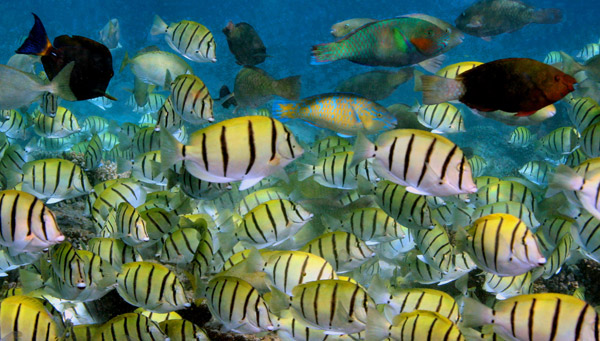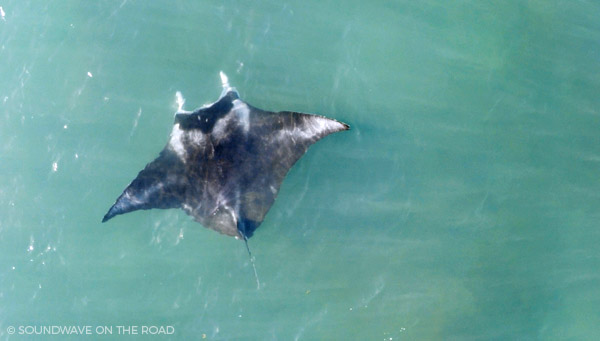
The coastal and marine areas at Gnaraloo are magnificent but fragile natural assets, notable for their sense of remoteness and pristine beauty.
They feature a variety of environments, including sandy beaches, lagoons and the Ningaloo Reef, one of the world’s largest fringing coral reefs. It provides a habitat for numerous marine wildlife, including whale sharks, dugongs, manta rays, humpback whales and endangered sea turtles… Its remarkable ecological values should be fully protected and the Gnaraloo Wilderness Foundation working with governments will fight for the protection of this national treasure.


Ningaloo Coast World Heritage Area
The Ningaloo Coast World Heritage Area is a protected wilderness area and considered one of the most outstanding natural places in the world. World Heritage status is awarded by the United Nations Educational, Scientific and Cultural (UNSECO) Organisation to sites that are deemed to possess ‘Outstanding Universal Value’. This means cultural and/or natural significance so exceptional that it transcends national boundaries and is of common importance for present and future generations of all humanity (Department of Parks and Wildlife, WA, 2016).

The Ningaloo Coast was awarded World Heritage status in June 2011, in recognition of the following Outstanding Universal Values (some, but not all of these values are listed here) (Department of Park and Wildlife, Western Australia, 2016):
• Land and sea contrast – for the lush and colourful underwater world of the Ningaloo Reef in contrast with the rugged desert land.
• Diversity of habitat – the rare mix of intact and diverse terrestrial, coastal and marine habitats form an incredible interconnected ecosystem.
• Ningaloo Reef – one of the longest fringing reefs in the world. The reef’s biodiversity includes more than 200 kinds of coral, more than 500 kinds of fish species and hundreds of other animal species including crustaceans, mollusc, echinoderms (e.g. sea stars, sea urchins, sand dollars, and sea cucumbers) and sponges.
• Marine megafauna – for internationally important and rare marine megafauna, including whale sharks, orcas, whales, dolphins, manta rays, dugongs, sharks and turtles.
• Turtle rookeries – the Ningaloo coastline hosts important turtle rookeries in the Indian Ocean for three threatened species the loggerhead, hawksbill and green turtles.
International Biodiversity Hotspot
Gnaraloo falls within and immediately adjacent to the Ningaloo Coast World Heritage Area (2011) as well as the Ningaloo National Heritage Area (2010) and the Ningaloo Marine Park (1987).
The Gnaraloo coastline is notable for its isolation, beauty and limited development. The marine environment at Gnaraloo has a variety of habitats, including sand, intertidal and subtidal coral reefs, lagoon and seaward subtidal reefs and shoreline reefs. The limited development has created a perfect environment for marine flora and fauna to thrive and the area has been named as an International Biodiversity Hotspot (Marine) (International and National Biodiversity Hotspot Map, State Government, Western Australia, 2006). Public vehicle access north of Gnaraloo Bay is closed and the northern part of Gnaraloo is an ‘Area of Environmental Management Priority with high conservation value which should be managed to a high status of protection’ (Western Australian Planning Commission, 2004).
Ningaloo Marine Park
The Ningaloo Marine Park stretches 300km from Red Bluff at Quobba Station, immediately south of Gnaraloo, past Gnaraloo to Bundegi in the north. The Ningaloo Reef borders the shoreline at Red Bluff. While considered a barrier reef off the coast of Gnaraloo Bay, the reef leaves the coast at Gnaraloo Point and becomes Australia’s largest fringing coral reef. The Ningaloo Reef is one of only two coral reefs in the world that have formed on the western side of a continent and is considered Western Australia’s premier marine conservation icon (Department of Parks and Wildlife, Western Australia, 2016).

Gnaraloo coastline
At Gnaraloo, from south to north, there are four Marine Sanctuary zones of the Ningaloo Marine Park: Turtles, Three Mile, Gnaraloo Bay and Cape Farquhar. The latter two marine sanctuary zones are of particular interest for turtle conservation, with the Gnaraloo Turtle Conservation Program conducting turtle nesting surveys on Gnaraloo Bay and Gnaraloo Cape Farquhar beaches that overlap or are in close proximity to the Marine Sanctuary zones. Within these zones, there are strict restrictions on activities that may occur. All fishing and collection activities are banned. Both the Gnaraloo Bay and Gnaraloo Cape Farquhar areas are known as important nesting locations in Western Australia for nesting loggerhead sea turtles (Caretta caretta).


Ningaloo Commonwealth Marine Reserve
The Ningaloo Commonwealth Marine Reserve borders the western edge of the State Ningaloo Marine Park, covering 2,435km2 with water depths ranging from 30m to more than 500m. It incorporates a diversity of habitats including the continental slope and shelf, as well as pelagic habits in the open ocean.
The Ningaloo Commonwealth Marine Reserve provides essential biological and ecological links that sustain the Ningaloo Reef and its biodiversity, including the supply of nutrients to reef communities from deeper waters further offshore.
These waters are visited by whales such as humpback, blue whales, minke, Bryde’s, southern right and orcas, whale sharks and dolphins (Department of Parks and Wildlife, Western Australia, 2016).


Threat to the reef: Coastal development
As populations and tourism pressure continue to grow worldwide, there is ever-increasing pressure to develop coastal regions. The State Government (Western Australia) has in the past identified Gnaraloo Bay for development and it continues to be under threat. The reef can be negatively affected from the development of these areas. Read more…

References
Department of Parks and Wildlife (DPAW), Western Australia (2017). Ningaloo Coast World Heritage Area. Visitor Guide, April 2016.
Department of Parks and Wildlife (DPAW), Western Australia (2017). Ningaloo Coast News Autumn 2017, April 2017.
Department of Primary Industries and Regional Department. (2017). Ningaloo Marine Park, retrieved from http://www.fish.wa.gov.au/Sustainability-and-Environment/Aquatic-Biodiversity/Marine-Protected-Areas/Pages/Recreational-fishing-in-Ningaloo-Marine-Park-.aspx
Western Australian Planning Commission. (2004). Ningaloo Coast Regional Strategy Carnarvon to Exmouth. August 2004.
Casale, P. Riskas, K. Tucker, A.D. & Hamann, M. (2015). Caretta caretta (South East Indian Ocean subpopulation). The IUCN Red List of Threatened Species, 2015, retrieved from http://dx.doi.org/10.2305/IUCN.UK.2015-4.RLTS.T84189617A84189662.en.
Department of Environment and Conservation (DEC, 2011). Ningaloo World Heritage Flyer, Australian Government, released 1 August 2011, Exmouth.
The information was compiled by Karen Hattingh, Simone Bosshard, Tessa Concannon, Tess DeSerisy, Heather Shipp and Megan Soulsby, 2017/18
Continue reading
Sea turtle conservation
The scientific Gnaraloo Turtle Conservation Program identifies, monitors and protects key coastal nesting rookeries of endangered sea turtles on the Gnaraloo remote beaches.
Sea turtle migrations
During sea turtle nesting seasons 2015/17, the Gnaraloo Turtle Conservation Program undertook the first ever satellite tracking of loggerhead females that nest on the Gnaraloo coastline.
